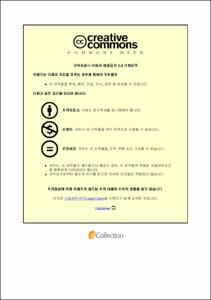전통산업 고도화를 위한 데이터 기반 R&D 지원정책
- Alternative Title
- Data-driven R&D support policy for upgrading traditional industries
- Abstract
- The traditional industries have played an important role in the South Korean economies in the past several decades, but it currently faces the limitations of growth potential and profitability due to saturated world market and rapid changes in the global industrial ecosystem. Central and local governments have suggested solutions for the industry, but they are just temporary prescriptions. There are rarely any studies taking strategic approaches to the problem. If governments can support the companies that are likely to increase their value-added selectively, it will break through the current situation more effectively. Therefore, this paper studied the data-based improved plan for the governmental funding policy of SMEs to support innovative activities. In particular, we have been studied in data-based support methods to induce traditional industries to transform them into high-value-added through SME R&D funding policy. And the fishery industry, which is one of the traditional industries centered in the Southeast area in Korea, was selected as the target industry. An exploratory study was conducted to examine the applicability of other traditional industries by constructing a data-driven method that induces an industrial transformation for the fishery industry.
Firstly, This paper introduces a study on the selection method utilizing data envelopment analysis (DEA) to find SMEs with the potentials to increase profits and growth. We suggest selecting SMEs with high management efficiency and the ability to utilize intangible assets as the target companies. We also suggest policy objectives for SMEs in the domestic fisheries industry based on the results of DEA analysis and propose a data-based method for the policy decisions.
Secondly, for resource allocation based on evidence to induce effective and efficient innovation, this research examined the patent patterns in major fisheries industry countries and the inter-relationship and convergence between technologies. We obtained patent information from Espacenet DB. We applied the association rule mining to IPC code to examine innovation trends and convergence patterns to understand the convergence characteristics of the technology. Through reviewing the effects of the association rule mining, they propose consequences for fisheries R&D strategies to improve Korean fisheries' competitiveness.
Based on the research results, a practical and strategic method for flexibly converting to a new industry based on the infrastructure of the traditional fisheries industry through efficient investment by the government was suggested, and the applicability and feasibility of other traditional industries were explored.
- Issued Date
- 2020
- Awarded Date
- 2020. 8
- Type
- Dissertation
- Publisher
- 부경대학교
- Alternative Author(s)
- Soonwook Hwang
- Affiliation
- 부경대학교 대학원
- Department
- 대학원 과학기술정책학과
- Advisor
- 천동필
- Table Of Contents
- I 서 론 1
1. 연구배경 및 목적 1
2. 논문 구성 4
가. 논문 구성 4
나. 논문 요약 5
II 이론적 배경 및 선행연구 8
1. 전통산업 8
2. 수산산업 10
3. 중소기업 기술개발 지원정책 12
가. 중소기업지원정책의 개관 12
나. 중소기업지원정책의 효과성 14
다. 정부지원의 데이터 기반 효율화 방안 17
III 데이터 기반 정책지원 대상 우수 중소기업 발굴 방법론 연구: 국내 수산산업을 대상으로 23
1. 문제 제기 23
2. 선행연구 26
가. 수산분야 지원정책 26
나. Data Envelopment Analysis(DEA) 28
3. 연구모형 및 데이터 32
4. 분석결과 37
5. 소결 42
IV 특허 IPC 공통분류와 연관규칙 마이닝을 통한 수산분야 기술동향과 융합특성 분석 46
1. 문제 제기 46
2. 선행 연구 47
3. 연구모형 및 데이터 49
가. 연구절차 49
나. IPC 공통분류 분석 50
다. 연관규칙분석과 특허 52
라. 데이터 55
마. 특허 동향 57
4. 연구결과 59
가. 연관규칙분석 결과 59
나. 양식 기술 61
다. 어획 기술 64
라. 제품가공기술 67
5. 소결 70
V 결 론 74
1. 결과 종합 74
2. 시사점 86
가. 중소기업 지원정책 86
나. 수산산업 스케일업 89
3. 연구 한계점 및 향후 연구 계획 95
- Degree
- Doctor
- Files in This Item:
-
-
Download
 전통산업 고도화를 위한 데이터 기반 R&D 지원정책.pdf
기타 데이터 / 2.54 MB / Adobe PDF
전통산업 고도화를 위한 데이터 기반 R&D 지원정책.pdf
기타 데이터 / 2.54 MB / Adobe PDF
-
Items in Repository are protected by copyright, with all rights reserved, unless otherwise indicated.